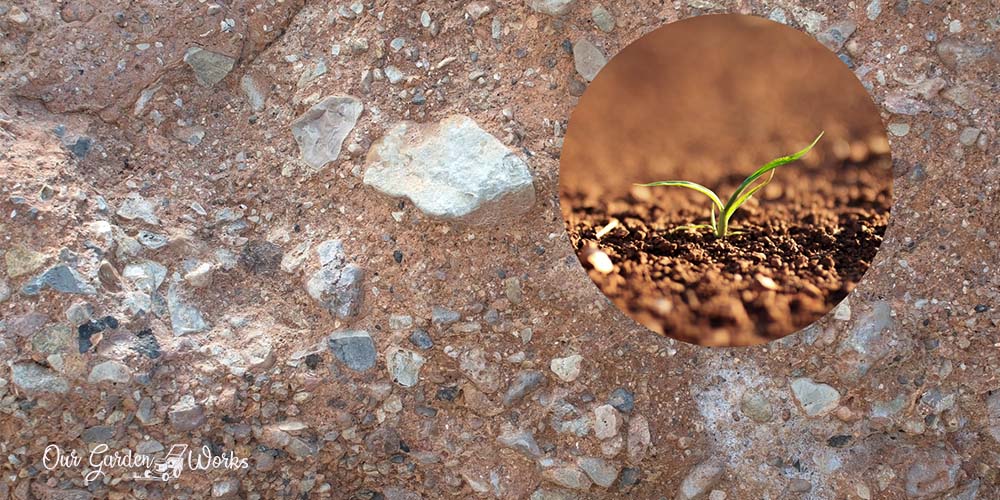Compacted soil is a common problem for homeowners as soon as spring starts. A dry or muddy patch in the lawn and stone-hard plant beds won’t be able to keep anything alive for the growing season. So, it’s crucial to learn how to loosen compacted soil to secure a green lawn and a garden full of fruits and flowers.
Common causes of soil compaction
Several factors cause soil compaction. It is not confined to a sole cause like neglect since it is formed through the accumulation of the following external and environmental conditions:
Water drainage and frequent precipitation problems
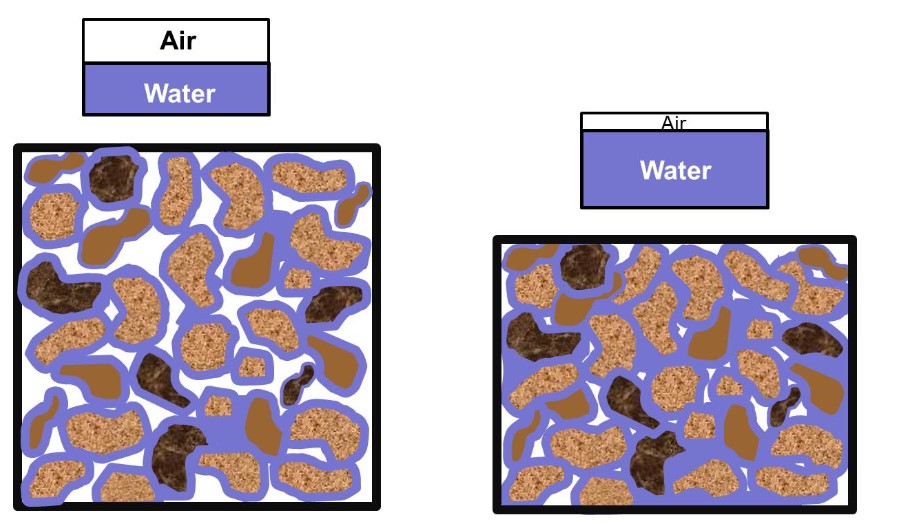
According to the University of Minnesota, wet soils are more susceptible to soil compaction due to decreased pore size.
Pore size is the air pockets between soil particles that allow air and water to pass through. Too much water in the soil reduces the friction between soil particles, creating smaller pores that make them stick together.
Lawns and garden beds with poor drainage or experiencing frequent rain or drizzle will have more chances of having problems with rock-hard soil. Also, the moisture from melting snow in spring is one of the main drivers of soil compaction in lawns.
High foot or wheel traffic
External pressure from foot traffic, cars, or heavy agricultural equipment can also compress the air pockets in the soil leading to soil compaction.
This factor is common in front lawns with no garden path and parts of the lawn close to sprinklers or spigots.
Prolonged drought and hot weather
Several months with no rain and muggy weather will evaporate the moisture in the soil and become too dense. In lawn technical terms, it is called localized soil compaction.
Soil moisture is like a lubricant or oil between soil particles that help them create big pores or air pockets. Without it, the soil particles with porous surfaces will stack against each other and form a rock-hard clump.
Till or no-till: How to loosen compacted soil – 3 methods
The till and no-till approach to handling compacted soil has sparked so many debates in the gardening community up to this day. Some gardeners are successful in using both methods which explain the cause of the rift.
Another method is using natural tillers like radish in breaking up compacted soil and making it a more conducive growing medium for other plants.
Check out how these methods work and their respective benefits to your garden.
Tilling or core aeration method
Tilling is the process of turning the soil for aeration and allowing nutrients and moisture to move deeper into the ground.
It helps the proper exchange of oxygen and carbon dioxide in the root level of the plant and allows the seed to germinate.
Adding gypsum, compost, and humus to the compacted soil as you till can help improve its structure and nutrient uptake. Aside from amending the soil, gardeners also do the following methods to improve compacted soil:
1. Core aeration
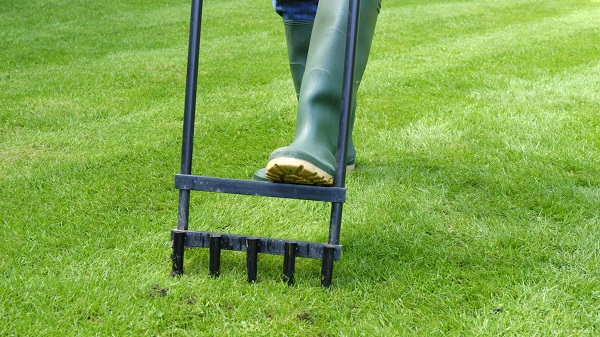
Core aeration, in simple terms, is creating holes in the compacted soil to aerate the soil.
You can use a broadfork for small established lawns or a cultivator for newly treated yards. Here are some helpful tips when core aerating your soil:
(1) You have an option to exclusively core aerating the localized compacted soil in the lawn and not do it on the parts that have well-draining ones.
To know where the compaction occurs, here’s what you can do:
Poke a screwdriver or anything sharp and pointed like a knife into the lawn. Well-drained soil will show no resistance when you push the screwdriver into the soil. However, compacted soil will be hard to push and can only be as deep as ½ to ¾ of an inch.
(2) Timing is crucial when core aerating the soil. According to the University of Maryland, you should avoid core aerating a lawn when the grass is dormant. Doing so will weaken the grass and make it more prone to fungal diseases. Here’s a brief timeline of core aerating grass:
- Warm-season grass: June or July (Active growth).
- Cool-season grass: September or October (Fall).
(3) Core aeration can only be done every two to four years if there’s less foot or machinery traffic in the area. However, you can core aerate as frequently as yearly if there’s high foot traffic that causes the compaction.
(4) Three types of soil aeration are spike, core, and liquid aeration. Spike aeration is ideal for sandy compacted soil since it creates shallow holes in the lawn without too much soil disturbance. It is often done using a mower attachment.
Spike aeration is not ideal for clay soil because it will take the shape of the spikes and become even more compact than loose. So, core aeration is the most ideal option for clay soil.
On the other hand, liquid aeration is a method where you will use a liquid aerator solution that can penetrate deeper into the soil. It contains nutrients that will feed soil microorganisms and add nutrients to the soil.
(4) The secret to successful core aeration is the combination of two aeration methods. Initially apply liquid aerator in the soil before core or spike aeration.
Pro tip: Frequent use of heavy equipment like huge core aerators can do more harm than good on the lawn. Their weight decreases and pulverizes the soil particles, which makes the soil compaction worse for the next few years.
2. Topdressing
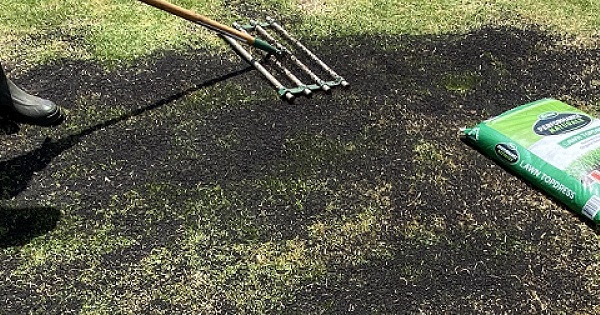
Topdressing is the application of compost or organic materials or a combination of sand and compost.
It helps add organic materials into the soil that will aid in nutrient retention and improve water drainage. Compost adds volume to the soil and squeezes its way between soil particles and creates air pockets.
Some people use sand as a top dress, especially on golf courses, since it has a huge particle size that aids in proper drainage. However, it is not advisable to topdress sand on clay soil because it will only lead to more compaction.
According to the University of Nebraska, the ideal ratio of soil structure for lawns and garden beds is 50% solid soil particles like silt, sand, or clay, 25% air, and 25% moisture.
Sand has the second biggest particle size after gravel while silt and clay found in soil has the smallest particle size.
When they are merged, the smaller soil particles will fill in the air pockets around the sand particles, making the soil more compact. Sports fields and golf courses use sand since it helps add soil strength which is crucial to sustaining ground stability for sports activities.
3. Fertilize
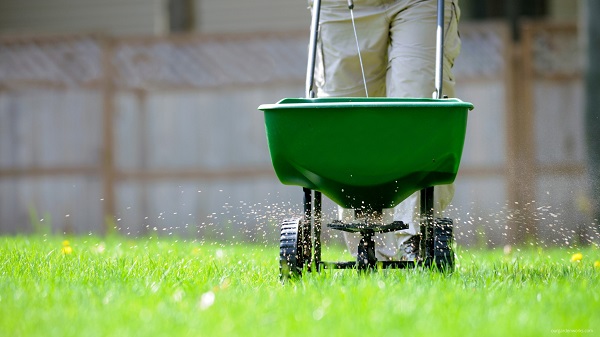
After letting the soil breathe and improving its soil structure, it’s the best time to introduce nutrients into the soil so they can reach the deeper layers of the soil.
Due to the lack of movement in the soil, compact and clay soil lacks nutrients that will help nourish the grass or plants.
Fertilizing the lawn or garden bed 48 hours after aeration will further equip the soil with everything that the plants or grass will need. As the saying goes, the secret to good plant growth and higher yield lies in nutrient-rich and well-draining soil.
4. The dilemma in tilling the soil
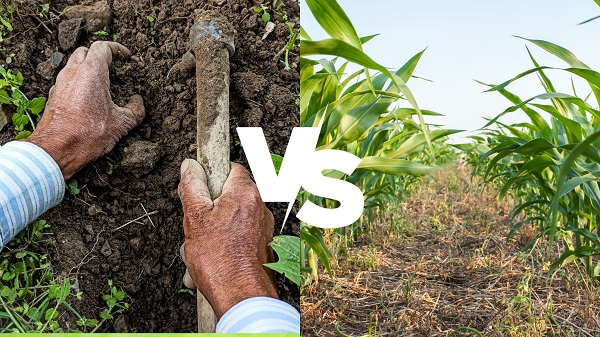
Some people argue that tilling the soil or core aeration is a short-term solution for soil compaction but makes it even worse over time.
According to Penn State Extension, tilling sandy soil can help deal with topsoil compaction. However, clay or heavy soil requires more frequent tillage and repeated freeze-dry cycles to prevent topsoil compaction.
No-till method
Do you know how to loosen compacted soil without so much effort?
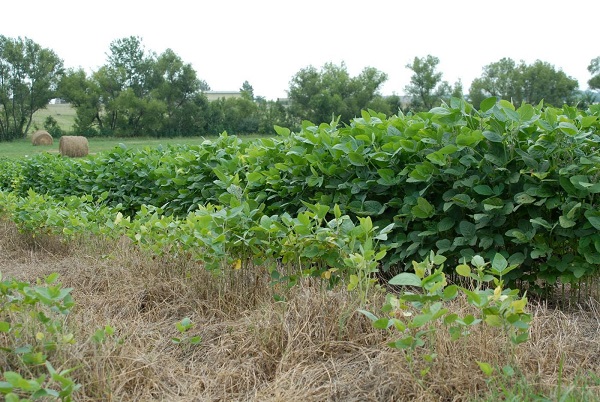
No-till might work for you! The no-till method is a gardening practice wherein gardeners and farmers do not disturb the soil to retain the soil structure and prevent the compaction and erosion caused by farming machinery.
The goal of the method is to let the previous crop or plant residue decompose naturally in the soil, cover it with cover crops to retain soil moisture, and allow topdressing to change soil structure. The seeds will get protection from the cover crops while they get nutrients from the decomposing plant matter.
The plant materials amended in the soil also help maintain the perfect combination of air, water, and soil particles, preserve the natural soil nutrients, and prevent erosion.
The no-till method offers a long-term solution to compacted soil since it rebuilds the soil structure destroyed by excessive tillage.
How the no-till method works
If you are planning on using the no-till method on your lawn or garden bed, here’s the step-by-step process:
- Keep the soil weed-free.
- Deeply water the soil before applying the organic materials.
- Let the residue of the previous crops decompose on the ground.
- Apply 1 to 2 inches of animal manure on top of the soil.
- Water the bed one last time and let nature take its course.
Challenges with the no-till approach
Transitioning from tilling or core aeration to no-till comes with several adjustments. It takes a long time before the soil structure change and weeds and pests can become a problem for the first two years.
If you also want to plant and get more yield, you’ll need to be very patient to see the results.
Natural tillers
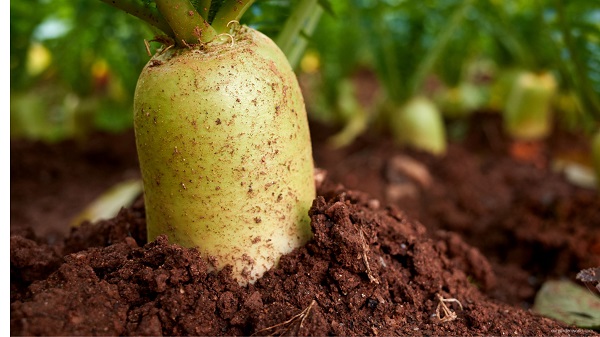
Another option on how to loosen compacted soil is through the help of tiller root crops like daikon radish.
Farmers have been using radish to loosen compacted soil for hundreds of years. It can thrive in poorly-draining soil and helps break clumps of soil as it grows underground.
Here’s how you can use daikon to loosen your compacted soil:
- Prepare the garden bed by aerating the soil using a rake or a core aerator.
- Topdress the compacted soil with compost and leave it for a few days to work its way into the soil.
- Then, start planting the seeds of radish and water them weekly until maturity.
- You’ll know that the radish is ready to harvest when you can already see its shoulders on the topsoil. In most cases, the top part of the crop will even peek out from the soil.
The benefit of planting radish is you’re not only getting some vegetables to harvest but also how its taproot can penetrate the deep layers of the soil that promotes water and air infiltration. Check our separate posts for the vegetables that you can grow in clay and compacted soil here.
What’s the best method to loosen compacted soil?
As MI Gardener said it best, the combination of till and no-till methods can help give you a long-term solution to your compacted soil.
Perform tilling and core aeration for a year or two to improve the soil structure and use the no-till method to further enhance the soil structure.
It is also helpful to plant root crops and other plants in the problem areas of your garden because the roots of plants prevent erosion and keep the soil microorganisms healthy.
Final Thoughts
Learning how to loosen compacted soil is probably one of the rights of passage in any gardener’s life. It is an essential skill that will lead you to a more bountiful harvest and a jaw-dropping manicured lawn that any neighbor would envy.
Soil preparation is laborious. So, make it worth every sweat by doing the right methods and using the right tools at the right time.
We hope this post helped you gain some of the best practices of gardeners when it comes to soil preparation and discover the secrets to better yield.
After reading everything, are you a pro till or no till? Have you tried doing the no-till approach?
Let us know your thoughts in the comments section! Also, please share this post with your friends and let them navigate the soil preparation journey with you. Who knows they might even share with you some of their gardening tips and secrets!
Happy gardening!
